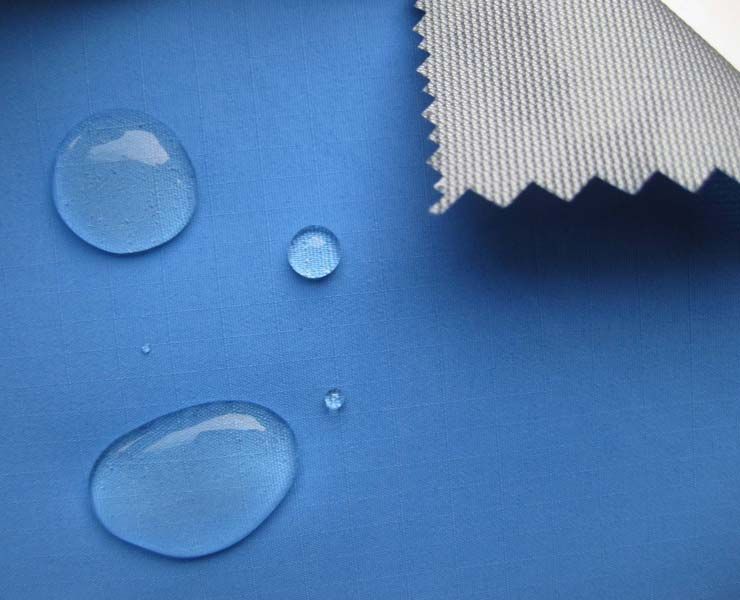Waterproof fabric
As functional textiles are referred to clothing and home textiles made of fibers, yarns, woven and knitted fabrics or materials with functional added value.
Properties
Depending on the purpose, function clothes have the following characteristics:
- Windproof
- Waterproof
- Breathable
- Thermoregulatory
- Stain-resistant
- Antimicrobial
- Flame retardant
- UV-resistant
- Electrically shielding
- Elastic
- Durable
- Easy to clean
- Resistant to chemicals
- Easily
- Warming / cooling
Breathability
Respiratory activity of so-called climate substances is the ability to let out steam. Breathability is measured in grams ( g) of water vapor per square meter ( m²) over 24 hours. This means that, for a breathability of example 5000 in 24 Hours 5000 grams of water vapor can escape through a square meter of fabric. By 1 m membrane can escape from 30 to 300 g of steam per hour. The measure of this is the water vapor transmission rate ( MVTR). Under extreme stress, the body secretes ten times the amount, so that here the limits are reached quickly up to two liters of sweat per hour even with highly breathable functional textiles. In hot and humid weather with temperatures above 15 ° C Air membranes function is very limited.
More layers of clothing
Upper and lower clothing (onion skin principle) must be coordinated. The underwear is to transport sweat and moisture away from the skin surface through the fabric through. This requires fibers with a good wicking properties, which themselves absorb little moisture. Examples of synthetic fibers include polyester (PES), polyamide (PA ) or polypropylene (PP). In addition, a good thermoregulation behavior is desirable. Wool ( WV) and wool blends have been found to be advantageous here. Cotton or viscose ( CV) with a high storage capacity for water are unsuitable.
The inner outerwear, sweaters wool or fleece insulates the body against the cold. Fleece is a knitted fabric of polyester fibers. It is lighter than wool. While it is not windproof, but also in the wet its shape, easily washable and quick drying.
The outer outerwear protects against wind and weather. The fabrics are robust ( eg, where could scrub backpack straps ), especially soft and cuddly, where it depends on freedom of movement, and increased water vapor permeable in areas of high welding segregation.
" Soft shells " are the latest generation of clothing. They combine the outer and middle layer of clothing in a jacket. The material is soft and cuddly.
Smart Clothes
Under " Smart Clothes " means clothes with intelligent function. It is " smart", especially through the integration of intelligent, most electronic components (electronic wear).
Functions of the Smart Textiles:
- Vibrant textiles
- Integration of electronic modules
- Energy generating textiles
- Identifying textiles
- Protective Textiles
- Material transferor textiles
- Adaptive textiles
- Sensory textiles
- Warming / heating textiles
Membrane systems
Well-known brand names for functional textiles are Gore- Tex and Sympatex. They are also examples of different working principles for membrane. Gore -Tex contains a Teflon film with microscopic pores that form a barrier to water but permeable to water vapor. Films according to the principle of Sympatex are macroscopically closed and contain no pores. Water vapor can pass anyway because functional groups in the plastic allow water vapor exchange.
Criticism
Materials containing halogenated hydrocarbons, fluorocarbons, Fluortelomeralkohole or perfluorooctanoic acid, represent a disposal problem, but because these substances are very poorly degraded and accumulate in organic tissue, they represent a long-term health problem, this is in many membranes, including in GORE-TEX, the case.

/water-retardant-duck-textile.jpg)





.JPG)


